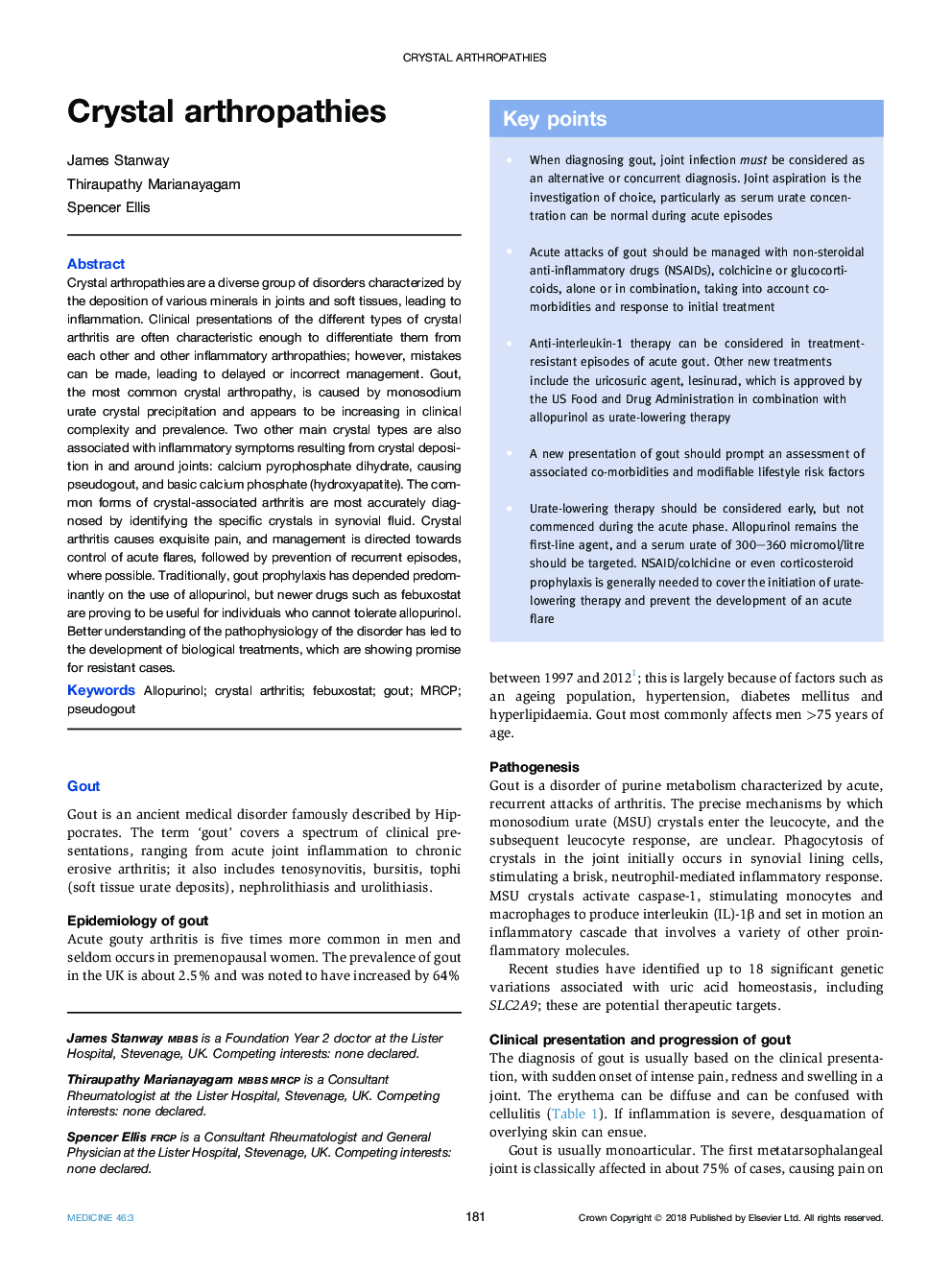| Article ID | Journal | Published Year | Pages | File Type |
|---|---|---|---|---|
| 8764065 | Medicine | 2018 | 6 Pages |
Abstract
Crystal arthropathies are a diverse group of disorders characterized by the deposition of various minerals in joints and soft tissues, leading to inflammation. Clinical presentations of the different types of crystal arthritis are often characteristic enough to differentiate them from each other and other inflammatory arthropathies; however, mistakes can be made, leading to delayed or incorrect management. Gout, the most common crystal arthropathy, is caused by monosodium urate crystal precipitation and appears to be increasing in clinical complexity and prevalence. Two other main crystal types are also associated with inflammatory symptoms resulting from crystal deposition in and around joints: calcium pyrophosphate dihydrate, causing pseudogout, and basic calcium phosphate (hydroxyapatite). The common forms of crystal-associated arthritis are most accurately diagnosed by identifying the specific crystals in synovial fluid. Crystal arthritis causes exquisite pain, and management is directed towards control of acute flares, followed by prevention of recurrent episodes, where possible. Traditionally, gout prophylaxis has depended predominantly on the use of allopurinol, but newer drugs such as febuxostat are proving to be useful for individuals who cannot tolerate allopurinol. Better understanding of the pathophysiology of the disorder has led to the development of biological treatments, which are showing promise for resistant cases.
Related Topics
Health Sciences
Medicine and Dentistry
Medicine and Dentistry (General)
Authors
James Stanway, Thiraupathy Marianayagam, Spencer Ellis,
